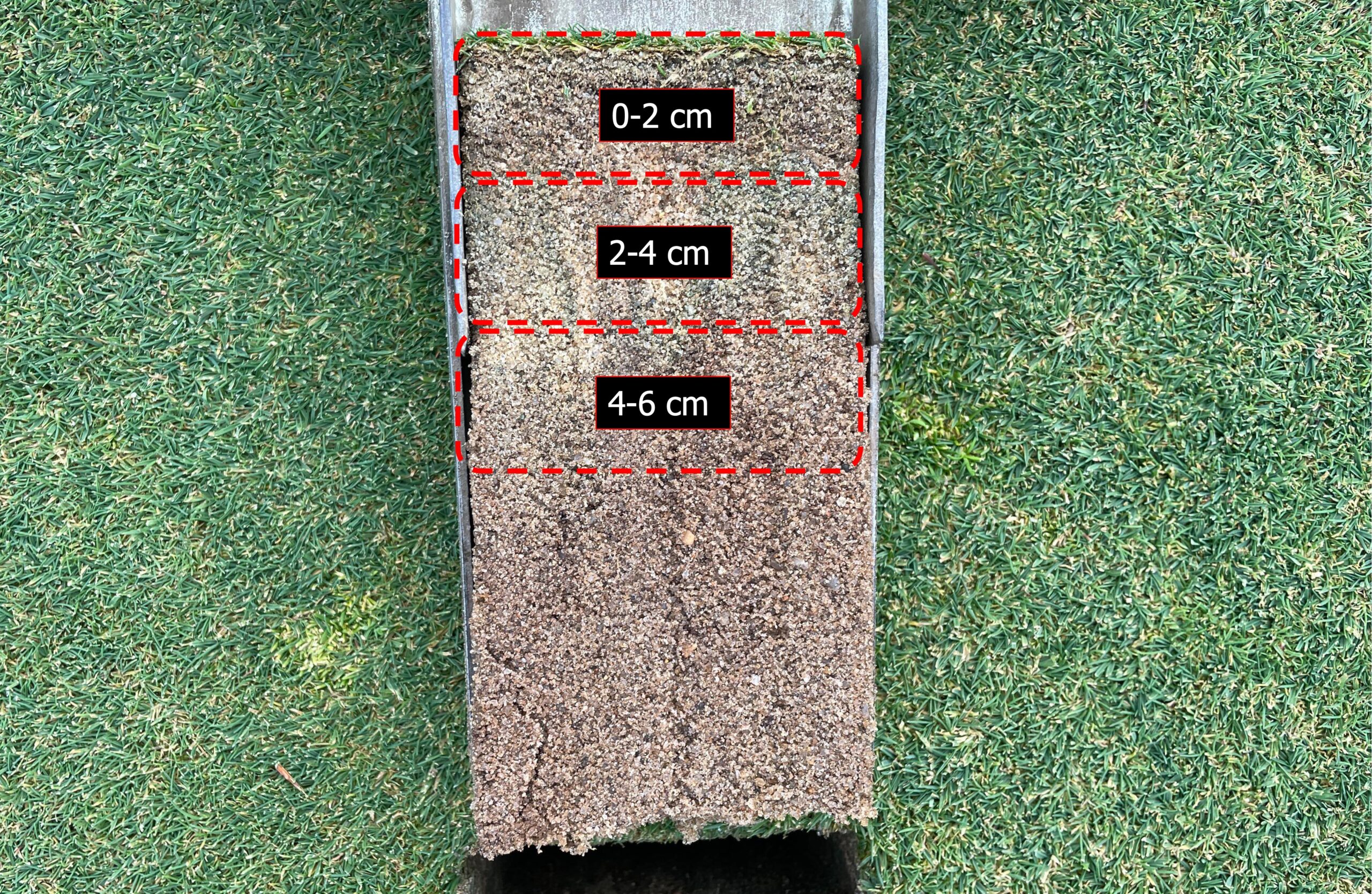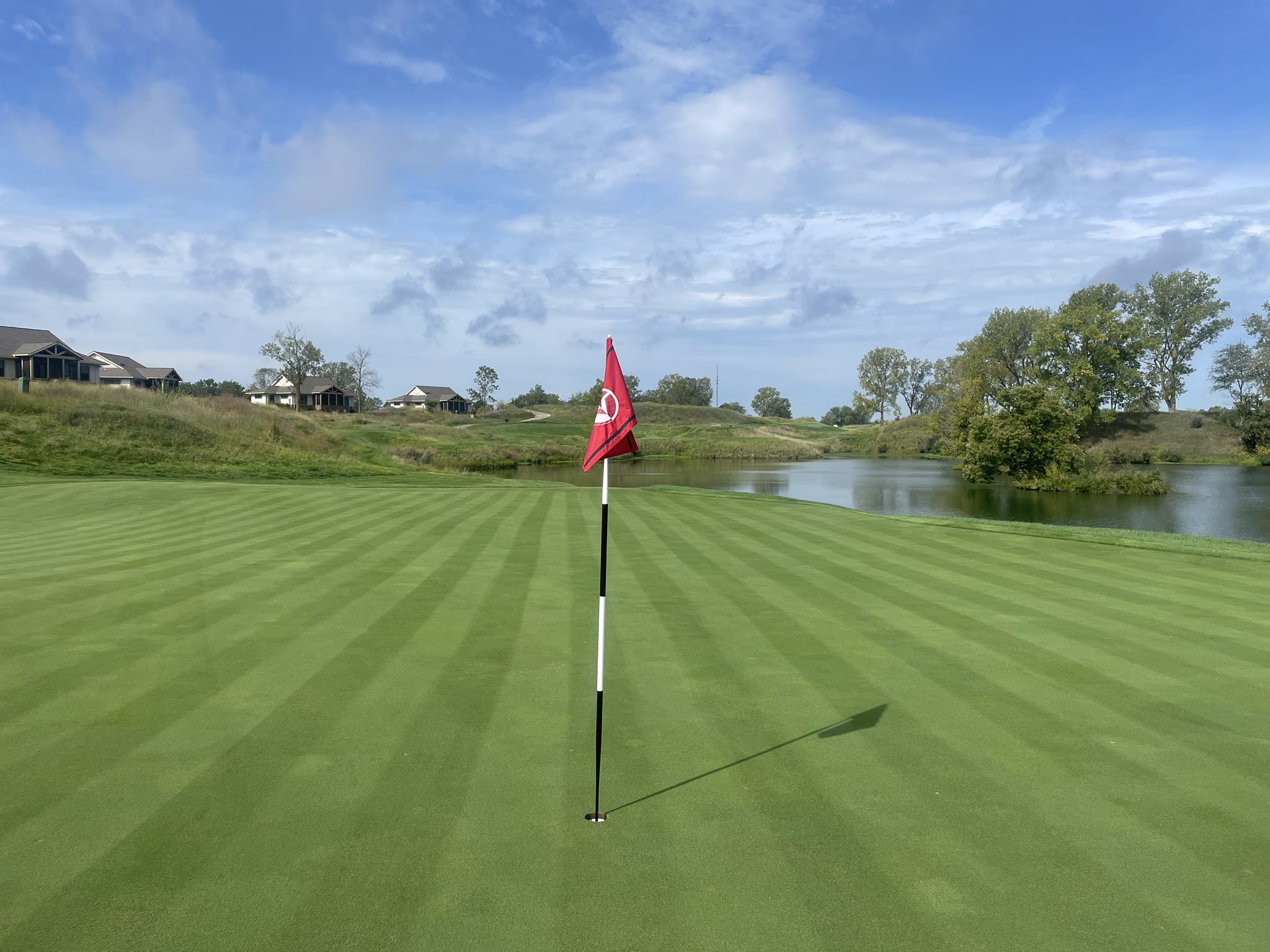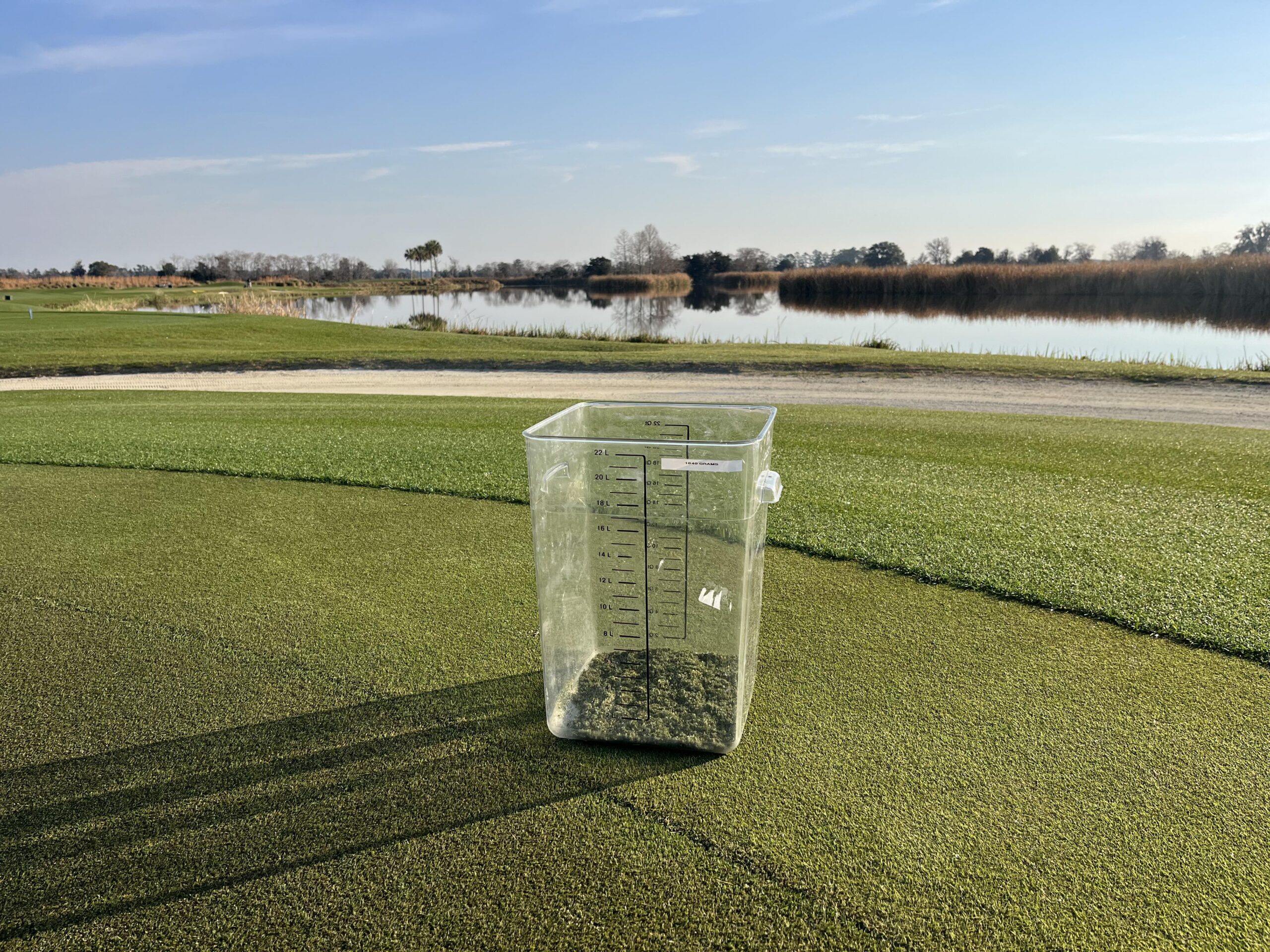Table of Contents
Measuring Organic Matter – i.e., OM246. 3
Particle Size Analysis, Porosity, Infiltration, and Coefficient of Uniformity. 4
Putting Green Performance Data. 4
Using Data to Build Your Topdressing and Aeration Programs. 4
Introduction
Firm and smooth surfaces with a healthy sward of turfgrass are arguably the most important performance metrics for high-quality putting greens. Unfortunately, excess organic matter or thatch can be detrimental to putting green conditions and create a host of agronomic problems. Topdressing and aeration are the standard cultural practices used to manage organic matter, but these are costly and often very disruptive to the playing surface.
An emerging trend in the industry is to combine organic matter soil physical test data at the 0-2 cm, 2-4 cm, and 4-6 cm depths – i.e., OM246 – with putting green performance data to develop topdressing and aeration programs. The results have been surprising to some, but in many cases, we’ve learned that if organic matter buildup is limited due to carefully managing growth, less topdressing and aeration may be possible without fearing long-term agronomic or playability issues. This article outlines how turfgrass managers can combine their knowledge and experience with performance and organic matter data to develop the most effective topdressing and aeration programs for their putting greens.
Excess organic matter creates poor playing conditions and a host of agronomic problems.
Soil Physical Testing
Measuring Organic Matter – i.e., OM246
A standardized method for measuring putting green surface organic matter is going to be released soon. This test procedure will include the loss on ignition test procedure – the technique most soil scientists consider the best combination of accuracy and ease of measurement – and soil partitioning at different depths. Being able to compare data is one benefit of having a standardized method, but partitioning the organic matter content at different depths is the most valuable part because it will provide the most actionable information for superintendents.
Most superintendents are surprised by initial OM246 test results, often citing the percent by weight is higher than anticipated. This initial reaction is a byproduct of past research and organic matter testing with different procedures and inconsistent depths. For instance, a common range targeted by superintendents is no more than 3-4 percent by weight, a threshold established by research from numerous studies. Shallower depths show higher organic matter content, which is what is the cause for higher-than-anticipated percent organic matter values when using OM246.
High OM246 values may not be an automatic cause for concern. The OM246 ranges are often compared to how doctors evaluate blood pressure in individual patients – there isn’t a perfect number but rather what do the trends look like over time. These baseline data allow you to develop a time series to better understand how organic material changes year over year.
OM246 measurements help superintendents gain a better understanding of how maintenance practices influence organic matter content over time and at different depths.
Particle Size Analysis, Porosity, Infiltration, and Coefficient of Uniformity
Organic matter measurements do not tell the entire story with respect to the soil physical properties of a putting green rootzone. Particle size analysis, porosity, infiltration, and the coefficient of uniformity are other soil physical tests that should be performed annually or bi-annually. These tests can identify if issues beyond organic matter impact playing conditions or turfgrass performance.
Putting Green Performance Data
The playability and health of the putting greens is of the upmost importance. Where practical, measuring these performance characteristics via data collection has proven to be highly valuable for daily and seasonal management practices. The amount of data one could collect is endless, but regularly evaluating surface conditioning and clipping volume seem to be the most beneficial.
Superintendents try to provide as many days of high-quality playing conditions – e.g., smooth, true, firm – as possible each season.
Surface Conditioning
Assessing the quality of a putting green has traditionally focused on subjective measurements or feedback. Superintendents frequently cite the value of chipping and putting on their greens to understand how they’re performing. These evaluations are most valuable when they’re complemented with objective measurements with a Stimpmeter and firmness testing device. The USGA GS3 ball presents an opportunity for superintendents to enhance their ability to assess smoothness, trueness, and firmness on putting greens. While currently available to superintendents in the U.S., this technology holds promise by enable superintendents to measure critical ball performance factors regularly.
Clipping Volume
Measuring grass clipping volume from putting greens daily is becoming increasingly popular. These data help evaluate and fine-tune various golf course maintenance activities including nutrition, plant growth regulation, and surface management practices like mowing, rolling, grooming, brushing, etc. Of these, having a more precise understanding of the growth rate has allowed superintendents to fine-tune and, in many cases, reduce nitrogen inputs. All turfgrass managers try to balance nutritional inputs with turf growth, play volume, and environmental conditions, but with increased play and more dynamic weather it is becoming harder to rely on experience alone. With regular clipping volume data, superintendents are now optimizing their growth rates for their site better than ever, which in turn can minimize organic matter accumulation caused by unnecessary growth.
Measuring clipping yields and putting green performance factors helps fine-tune surface management practices, turfgrass nutrition, and plant growth regulation programs.
Using Data to Build Your Topdressing and Aeration Programs
Topdressing and aeration programs have traditionally been developed based on the “art of greenkeeping” combined with limited performance data and inconsistent soil physical testing procedures. Making decisions based on this information has been effective for many turf managers, but for others it might have yielded poor results, unnecessary disruption to the greens, and perhaps even surfaces that lack enough organic matter needed to support routine maintenance and play.
There will always be an art to greenkeeping, but science and data are proven to help improve decision making. Routine putting green performance data combined with annual soil physical testing, particularly OM246, has allowed turfgrass managers to make the most informed decisions with respect to developing their topdressing and aeration programs. By closely monitoring trends in putting green performance and soil physical data, we’ve got more examples that illustrate if organic matter buildup is limited due to carefully managing and tracking turf growth/clippings, fewer inputs can be performed without fearing long-term agronomic or playability issues.
Ultimately, topdressing and aeration programs should evolve with those trends. If the greens tend to play soft and OM246 data is high, more topdressing and aeration probably are needed. If the greens are playing well and OM246 data has remained consistent over a period, turf managers can choose to stay with the existing programs or consider reducing the amount of topdressing and aeration performed annually. With both options, but especially the latter, it is valuable to work closely with a skilled agronomist to understand the pros and cons scaling back on topdressing and aeration and build consensus with club officials.
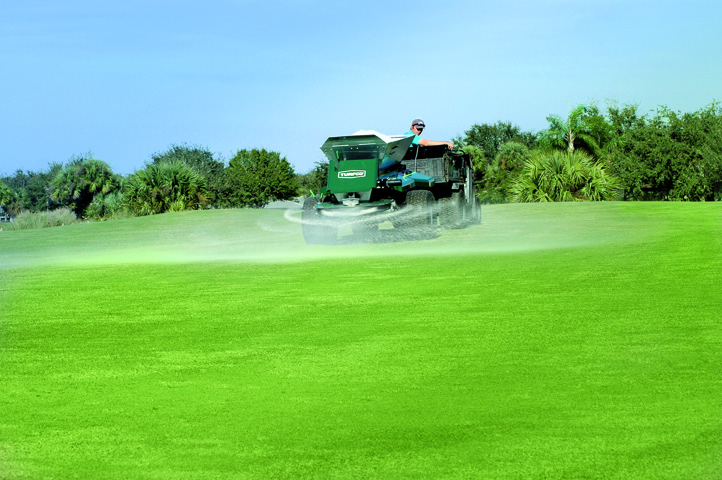
Disruptive maintenance practices are necessary to remove and dilute excessive organic matter.
Effectively communicating how putting green management practices are dynamic is key. For instance, most golfers will be thrilled with the idea of potentially less aeration or other disruptive practices. Be sure club officials understand that the programs used to manage the greens are driven first and foremost by your experience and knowledge as a turf manager, along with performance data collected regularly, and annual soil physical analysis.
Conclusion
Superintendents try to provide as many days of high-quality playing conditions – e.g., smooth, true, firm – as possible each season. Disruptive maintenance work like topdressing and aeration have been an integral part of producing the desired playing conditions at most courses for decades. These are still highly beneficial cultural practices, but we’re learning that performance data, OM246, and clipping volume measurements can complement an experienced superintendents decision-making when determining topdressing and aeration inputs. In some cases, these data have allowed superintendents to scale-back on disruptive maintenance practices and provide their golfers with more days of high-quality playing conditions.
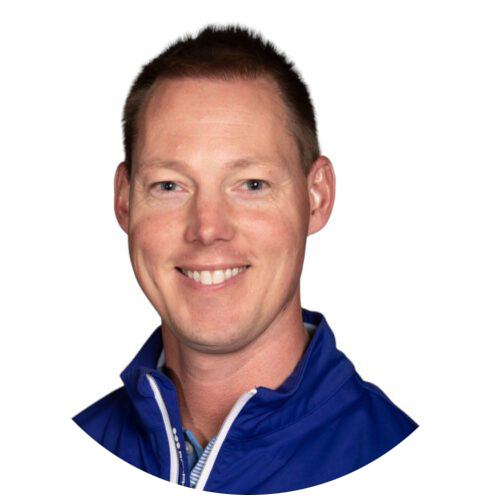
About the Author
ADAM MOELLER
Director of Agronomy – North America
Turfgrass Consultancy
Adam Moeller is the former director to the USGA Green Section Education and editor-in-chief of the USGA Green Section Record digital magazine. He has consulted with over 330 golf courses and collaborated with host superintendents to prepare 22 USGA national championships, including prestigious events like the U.S. Open and U.S. Women’s Open.
Adam is a highly accomplished individual with a Bachelor of Science degree in Horticulture from the University of Wisconsin and a Master of Science degree in Agronomy from Purdue University.
He is widely recognized as an industry leader and authority in his field, developing educational content for golf course superintendents, course officials, and golfers.
Due to his sought-after expertise, he frequently presents on golf course maintenance topics at turfgrass conferences in both the USA and at an international level.
In his free time, Adam loves to spend time with his wife and two sons. As an avid snowboarder and golfer, he enjoys seeing his young sons become interested in these sports.
